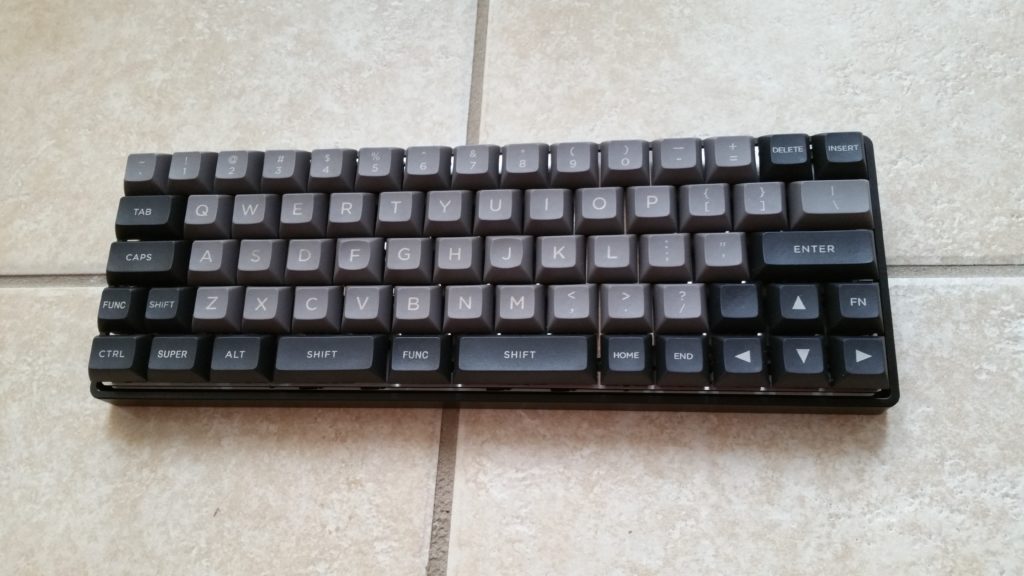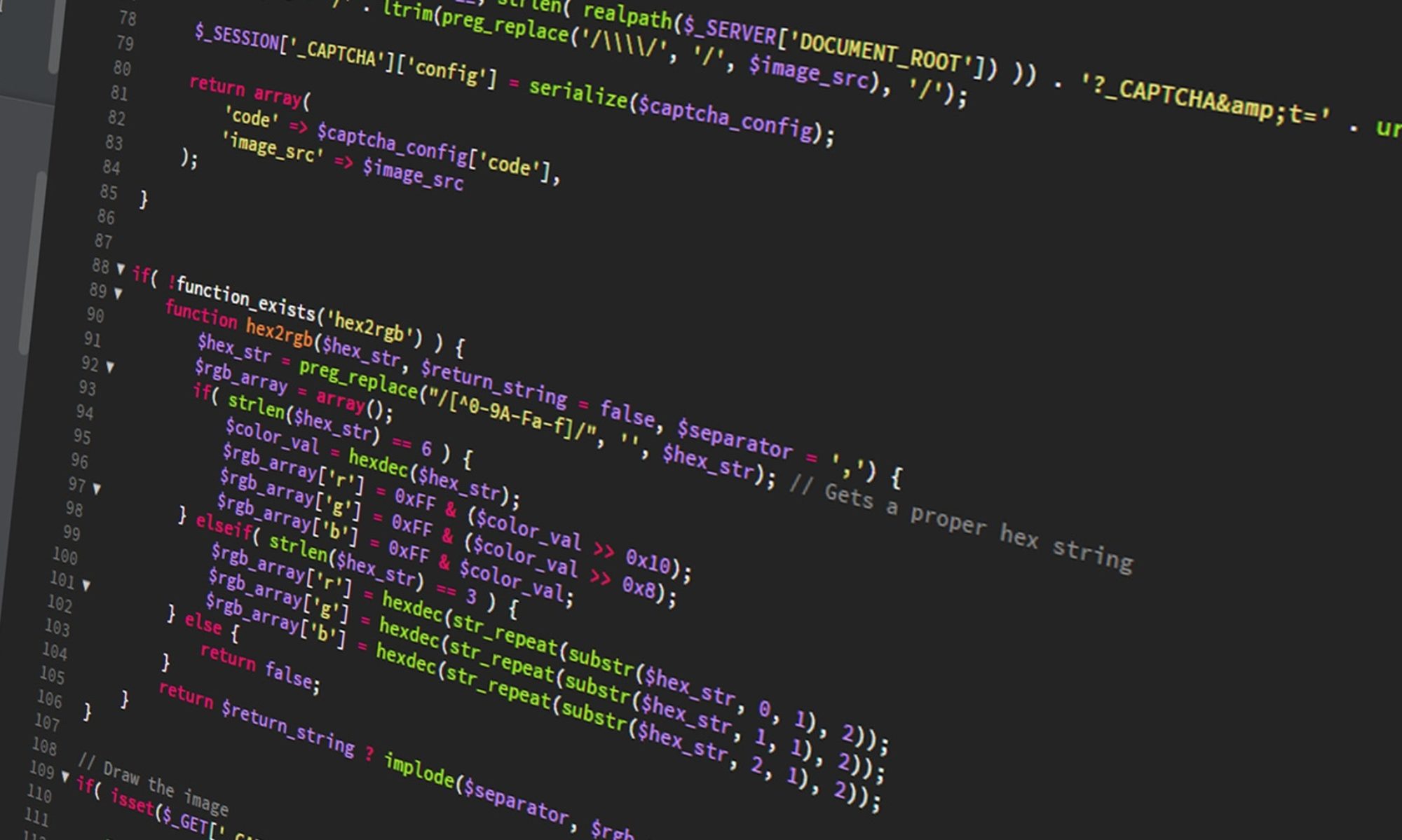This is my 60% keyboard built on the DZ60 Rev 2.0 printed circuit board.

These are the steps I took to configure it for my use. Please note that I had configured this keyboard using Linux; Windows and Mac alternatives exist, but they are outside the scope of this article.
1. The DZ60 can be customized using Quantum Mechanical Keyboard Firmware. I downloaded a copy of it here: https://github.com/qmk/qmk_firmware/zipball/master.
2. I then unzipped the files to ~/software/qmk/
3. Run this shell script to ensure all dependencies are installed:
sudo ~/software/qmk/util/install_dependencies.sh
4. Create a folder that will hold my custom keymapping file: ~/software/qmk/keyboards/dz60/keymaps/cpc1/keymap.c
I am utilizing 4 layers. Generally speaking:
Layer 0 is the main layer containing QWERTY and other such keys that I will use most often.
Layer 1 is activated by holding the key located beneath B. This layer contains F1-F12, basic navigation (ESDF for cursor movement, page up/down), volume control, and number pad (at right hand home row region).
Layer 2 is activated by holding the key located beneath NM.. This layer contains mouse navigation keys (ESDF for mouse movement, XCV as the three mouse buttons).
Layer 3 is activated by holding the key located beneath ENTER and to the right of UP. This layer contains keyboard hardware control keys (reset, LED controls).
This is my full keymap.c file:
#include "dz60.h"
#define __ KC_TRNS
#define ___ KC_TRNS
#define _______ KC_TRNS
#define HY KC_HYPR
#define LST KC_LSFT
#define SP_MO1 LT(1, KC_SPC)
#define BS_MO2 LT(2, KC_BSPC)
#define PN_MO3 LT(3, KC_PSCR)
const uint16_t PROGMEM keymaps[][MATRIX_ROWS][MATRIX_COLS] = {
// Layer 0 - Standard keyboard
KEYMAP_2_SHIFTS(
KC_GESC, KC_1 , KC_2 , KC_3 , KC_4 , KC_5 , KC_6 , KC_7 , KC_8 , KC_9 , KC_0 , KC_MINS, KC_EQL , KC_DEL , KC_INS,
KC_TAB , KC_Q , KC_W , KC_E , KC_R , KC_T , KC_Y , KC_U , KC_I , KC_O , KC_P , KC_LBRC, KC_RBRC, KC_BSLS,
KC_ESC , KC_A , KC_S , KC_D , KC_F , KC_G , KC_H , KC_J , KC_K , KC_L , KC_SCLN, KC_QUOT, KC_ENT ,
HY, LST, KC_Z , KC_X , KC_C , KC_V , KC_B , KC_N , KC_M , KC_COMM, KC_DOT , KC_SLSH, KC_RSFT, KC_UP , PN_MO3 ,
KC_LCTL, KC_LGUI, KC_LALT, KC_SPC , SP_MO1 , BS_MO2 , KC_HOME, KC_END , KC_LEFT, KC_DOWN, KC_RGHT),
// Layer 1 - Cursor Navigation, Volume, Number Pad
KEYMAP_2_SHIFTS(
_______, KC_F1 , KC_F2 , KC_F3 , KC_F4 , KC_F5 , KC_F6 , KC_F7 , KC_F8 , KC_F9 , KC_F10 , KC_F11 , KC_F12 , _______, _______,
KC_TAB , KC_HOME, KC_PGUP, KC_UP , KC_PGDN, _______, _______, KC_7 , KC_8 , KC_9 , KC_PPLS, KC_PMNS, _______, _______,
_______, KC_END , KC_LEFT, KC_DOWN, KC_RGHT, _______, _______, KC_4 , KC_5 , KC_6 , KC_PAST, KC_PSLS, KC_PENT,
HY, LST, KC_MUTE, KC_VOLD, KC_VOLU, _______, _______, _______, KC_1 , KC_2 , KC_3 , _______, _______, _______, _______,
KC_LCTL, KC_LGUI, KC_LALT, _______, _______, KC_0 , KC_PDOT, _______, _______, _______, _______),
// Layer 2 - Mouse Navigation
KEYMAP_2_SHIFTS(
_______, _______, KC_ACL0, KC_ACL1, KC_ACL2, _______, _______, _______, _______, _______, _______, _______, _______, _______, _______,
KC_TAB , _______, _______, KC_MS_U, _______, _______, _______, _______, _______, _______, _______, _______, _______, _______,
_______, _______, KC_MS_L, KC_MS_D, KC_MS_R, _______, _______, _______, _______, _______, _______, _______, _______,
HY, LST, _______, KC_BTN1, KC_BTN3, KC_BTN2, _______, _______, _______, _______, _______, _______, _______, _______, _______,
KC_LCTL, KC_LGUI, KC_LALT, _______, _______, _______, _______, _______, _______, _______, _______),
// Layer 3 - Keyboard Hardware Controls
KEYMAP_2_SHIFTS(
RESET , _______, _______, _______, _______, _______, _______, _______, _______, _______, _______, _______, _______, _______, _______,
_______, _______, _______, _______, _______, _______, _______, _______, _______, _______, _______, _______, _______, _______,
_______, RGB_TOG, RGB_MOD, RGB_HUI, RGB_HUD, RGB_SAI, RGB_SAD, RGB_VAI, RGB_VAD, _______, _______, _______, _______,
__, ___, BL_TOGG, BL_DEC , BL_INC , _______, _______, _______, _______, _______, _______, _______, _______, _______, _______,
_______, _______, _______, _______, _______, _______, _______, _______, _______, _______, _______),
};
5. Open a terminal window and navigate to ~/software/qmk/
6a. Run this command if you just want to create a hex file without actually flashing the keyboard:
sudo make dz60:cpc1
6b. Or, hold spacebar and B on the keyboard while plugging it into your computer; this will start the keyboard in bootloader mode. Now I can run the following command to compile the hex and then flash it onto the keyboard:
sudo make dz60:cpc1:dfu
6c. Or, if the keyboard is already plugged in and in use, run this command (same as 5b above). When the hex is built, it will prompt you to reset the keyboard so that the hex can be flashed onto the keyboard. In my case, my reset button is in Layer 3, as noted earlier.
sudo make dz60:cpc1:dfu
Additional info:
Full Documentation: https://docs.qmk.fm
GitHub of QMK Project: https://github.com/qmk/qmk_firmware/
